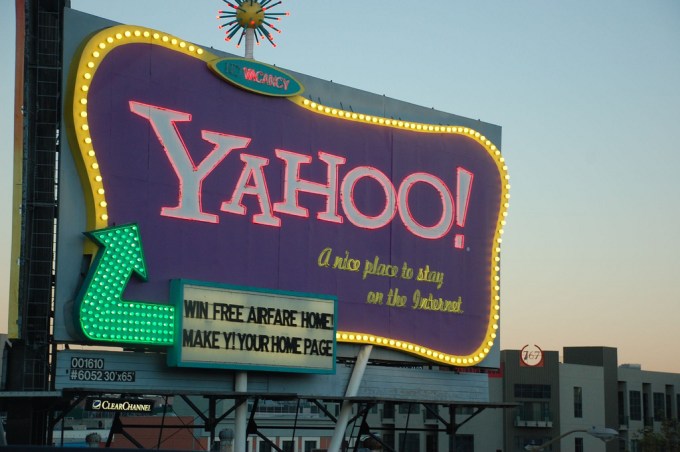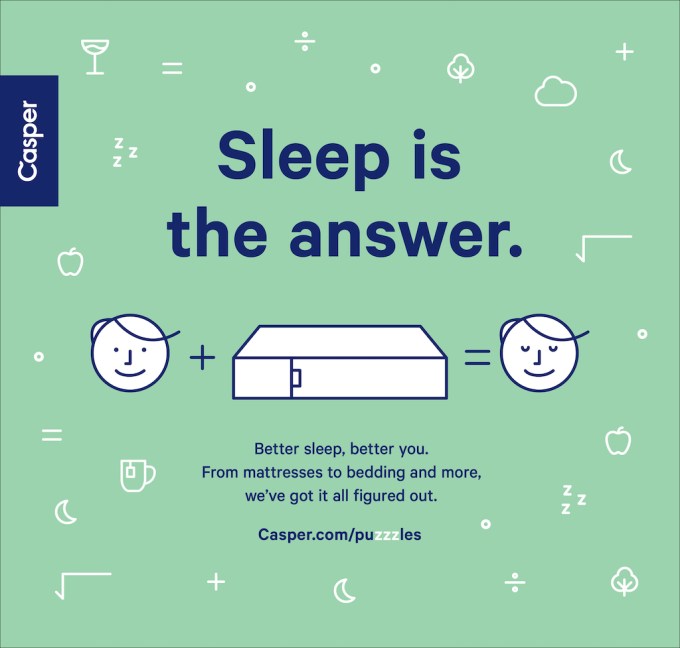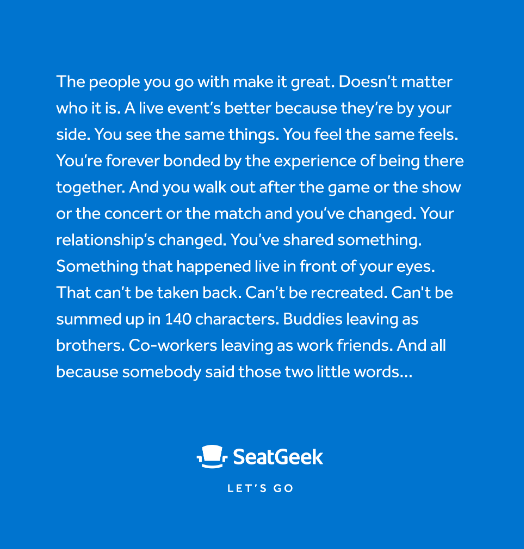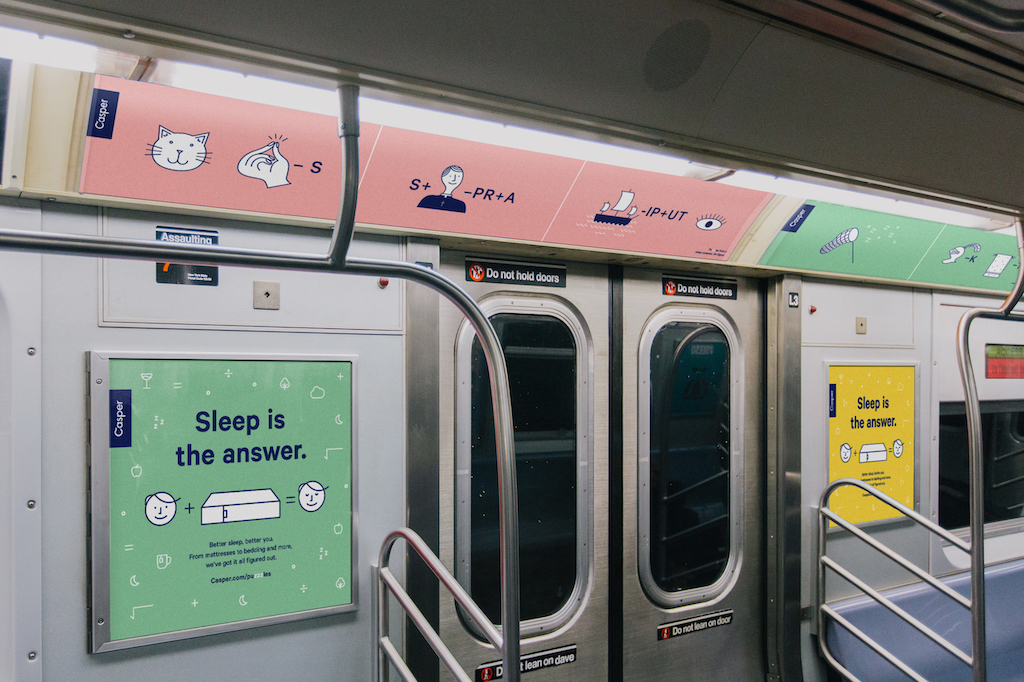If you’re a New Yorker, one of the easiest ways to keep up-to-date on the latest consumer products — furniture, beauty products, mobile apps, you name it — is to hop on the subway.
Even before you board, you may find yourself walking through a station filled with colorful startup ads. And once you’re actually on the train, you’ll probably be surrounded by even more of those ads.
It felt very different when I first moved to New York in 2013, back when the only companies that seemed to buy subway ads were local colleges, law firms and sketchy-sounding surgeons. Over the next few years, I noticed that the companies I wrote about in TechCrunch were starting to show up on the subway walls.
These ads are managed by Outfront Media, which has an exclusive contract with the MTA and says it’s worked with more than 150 startups and direct-to-consumer brands since 2018.
“Startups and DTC brands, now more than ever before, are looking for ways to raise awareness and gain market share among a heavy competitor set,” said Outfront’s chief product experience officer Jason Kuperman via email. “For these brands, it is all about testing and learning, and leveraging out-of-home (OOH) [advertising] and advertising on the subway allows them to do just that.”
Kuperman added that when they launch their subway campaigns, many of these startups are unknown, so they “find value in a permanent place to advertise that people pass through every day.”
From out-of-home to in transit
John Laramie, CEO of out-of-home advertising agency Project X, agreed that there’s been a big shift over the past few years.
He and I first spoke in 2011 about startups buying billboard ads alongside Silicon Valley’s main highway, Route 101. More recently, he told me, “Fast forward to the last four years, and who cares about the 101? It’s all about the New York City subway.”

In his view, a subway ad offers some obvious advantages over a highway billboard. On the 101, “Everyone’s going to pass that billboard at 55, 60 miles an hour, and they’re going to see 70 other advertisements.” On the subway, “there’s a huge dwell time” — in other words, you’re probably going to be standing or sitting in one spot, looking at the same handful of ads, for your entire commute.
This isn’t just happening in New York; Kuperman said Outfront has contracts with startups and direct-to-consumer brands in Atlanta, Boston, Detroit, Hartford, Los Angeles, Miami, Phoenix, San Francisco and Washington, D.C. But Handy co-founder and CEO Oisin Hanrahan noted that New York’s subway is unique among U.S. transit systems because it “cuts across all demographics.”
The home services company isn’t a startup anymore, since it was acquired by IAC and ANGI Homeservices last fall — but it was when it started advertising on the subway. Hanrahan said Handy ran its first subway campaign around six years ago, when it was still called Handybook.
“You’re at the earliest stages, trying to figure out how to gain the mindshare of your customers [and] looking for incredibly affordable, efficient ways of doing that,” he recalled.
At the time, the subway fit that description. In fact, Hanrahan said it was a “vastly mispriced” medium, allowing him to buy a month of ads on 10% of all subway cars for $40,000.

Similarly, Casper CMO Jeff Brooks said that at the outset, the subway provided “a very cost-efficient way” for Casper to reach consumers in its largest market. And that’s paid off — Brooks said that when you ask most New Yorkers about the company, subway ads are one of the first things they’ll bring up.
In fact, Laramie cited Casper, Oscar and Seamless as the “pioneers” in bringing this kind of advertising to subways, and Brooks (who joined the mattress and bedding startup last year) said, “Casper would be happy to take credit as kind of a catalyst.”
Of course, it’s not just about being first. Brooks said Casper’s approach was to bring “a really unique visual style” to the ads, and to be aware of the context in which they’re viewed. As an example, he pointed to a recent campaign featuring humorous sleep-related poetry.
“Those [ads] were super context-aware of the stressful commute that the majority of subway riders are going to find themselves in,” he said. “The idea [was] that we could create these little haikus, these little meditations that transported you away from the gum that you just stepped on, from being trapped on a car like cattle, and be this moment of escape … It would evoke the feeling of being back at home on your Casper.”

Not just for riders
Meanwhile, SeatGeek CMO Jennifer Ogden-Reese said the ticket marketplace has run seven subway campaigns since 2015, with plans for another next year. She pointed out that these campaigns aren’t just useful for reaching ticket-buyers.
“We look at it first and foremost as a driver of overall business… but an ancillary benefit to the subway has been around positioning SeatGeek as a tech-first, cool place to work in New York City,” Ogden-Reese said. She noted that when people come in for job interviews, they’re often “referencing the creative and the ads.” Plus, “All of our employees love to see the ads as well — it’s a fun morale boost.”
The best approach has evolved over the years, due to companies’ changing strategies, as well as shifts in the broader landscape.
After all, Casper isn’t just trying to sell you a mattress anymore; it’s trying to establish itself as the brand you think of when it comes to sleep and bedding. So its latest campaign is a series of sleep-related puzzles, directing passersby to a special website where they can find the solutions (and where Casper can track engagement).
Ogden-Reese said SeatGeek started out by offering promo codes and highlighting specific features of the app, but over time has shifted to campaigns that function more as “an ode to live events.”
“The [advertising] ecosystem is extremely interconnected,” she said. “There is definitely a place for us to tell a more brand-first story [on the subway] and also continue to use lower funnel channels, more digital channels, to drive conversions.”

With growing brands come growing price tags
The biggest change? The fact that so many other startups are now looking to market themselves on the subway. Laramie said that Outfront is now charging between $325,000 and $350,000 for a four-week “brand train” (an industry term for the 10% takeover that Hanrahan referred to earlier). And even with those prices, it’s sold out through early next year.
As a result, Hanrahan said Handy still buys a few “remnant” ads, but it’s no longer running any big subway campaigns. Moving forward, he suggested that it makes more sense for brands to “look for other mispriced channels, other out-of-home channels.”
And while Brooks said Casper won’t be pulling back from the subway (expect a refresh of those sleep puzzles soon), he also cautioned other marketers against following in the company’s footsteps.
“The subway today is not what it was when Casper reimagined it… just because of the success and adoption of so many brands in that environment,” he said. “Marketers need to think about the media landscape more broadly and where there might be more opportunity to disrupt a conventional way of advertising.”
Outfront’s Kuperman declined to discuss specific pricing or costs, but he acknowledged that some “young brands” may feel priced out of this market. Then he argued that they shouldn’t feel that way.
“In fact, the barrier of entry is as low as $50K, thanks to the digitization of the formats and Liveboard deployment,” he said. “This can help a brand build fame and speak to a mass audience. Of course, larger activations and time of year dictate pricing, but nothing is off the table when it comes to how creative our sales team can get.”































Comment